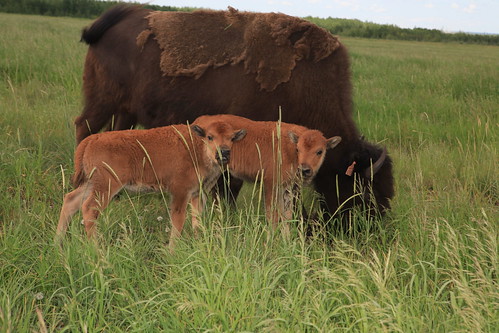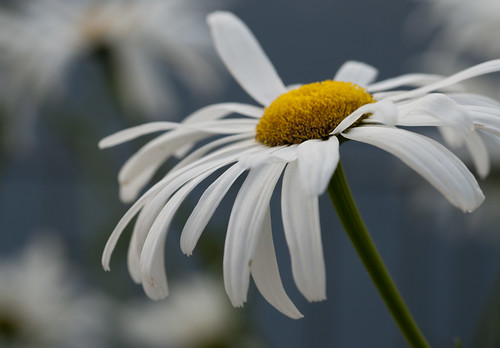What happened was that originally this yellow and white flower was named Chrysanthemum leucanthemum by Carl Linnaeus on May 1, 1753, in his work Species Plantarum. This book is the starting point for all scientific plant names forever... Anything published before 1753 doesn't really matter when it comes to scientific names for plants. So for plants, in the beginning, it was Linnaeus.
 |
| Oxeye daisy Illustration from Flora Batava by Kops et al. (1800) Public domain (Wikipedia) |
Centuries later it was shown that the genus Chrysanthemum was actually a mixed group of species that weren't that closely related to each other, so the genus would have to be split up into several genera, some of which already had been accepted by previous botanists. Scientists want only closely related species to belong to the same genus; it is the only thing that makes sense evolutionarily and logically. Linnaeus and other early botanists didn't have evolutionary information as a classification criteria (nor a scientific theory for that matter, that all came with Darwin's theory of natural selection in the late 1800s).
So, Chrysanthemum was split up in the late 1990s. Which of the subgroups would get the original name Chrysanthemum? According to the International Code of Nomenclature, which rules the scientific naming of plants, each genus has a type species, and that type species always has to be in the genus it is the type for. The type for the genus Chrysanthemum was set in 1929 as the species Chrysanthemum coronarium, so oxeye daisy would not get to keep the Chrysanthemum name, neither would the beloved 'mums' in our gardens. (Things got a little complicated when it later was shown that the type herbarium specimen for Chrysanthemum coronarium actually wasn't that species at all, but that is another story.)
| Cultivated chrysanthemums. These are not oxeye daisies. (cc) Pigsonthewing on Wikimedia |
Then, if oxeye daisy can't be in Chrysanthemum, what genus name should it take? Luckily, Lamarck had already put it in a genus named Leucanthemum in 1779 when he disagreed with Linnaeus, so the genus name Leucanthemum was available.
When a species changes genus it nearly always keeps its species epithet, the second word in its scientific name. It might change ending sometimes, but the earliest published species epithet stays, it has priority over later published species names. But, that would be leucanthemum for oxeye daisy, since Linnaeus named it Chrysanthemum leucanthemum. And that would mean a species named Leucanthemum leucanthemum, with the genus and species epithet the same (a tautonym), which is a total no-no in botany.
 |
| bison, which has the scientific name Bison bison (cc) Syncrude Canada Ltd on Flick |
So, Linnaeus was the first person that described this species, but Lamarck now gets the authorship for the current scientific name.
 |
| Oxeye daisy, now Leucanthemum vulgare (cc) Alexander Schneider on Flickr |
In conclusion,
CORRECT NAME: Leucanthemum vulgare Lam.
INCORRECT NAME: Chrysanthemum leucanthemum L.
[note, this is not an optional name, this is an old name that shouldn't be used anymore]
[note, this is not an optional name, this is an old name that shouldn't be used anymore]
Who gets this right?
For example, USDA-PLANTS, Encyclopedia of Life (EoL), Wikipedia, and Royal Horticultural Society.
Who gets it wrong and needs to update their websites?
Well, lots of seed and plant companies (American Meadows, Victory Seeds, etc.), some state departments (Minnesota Dept of Natural Resources, Colorado, etc.), a bunch of garden websites, and WebMD.
[Updated 18 November 2014 with new Chrysanthemum type information provided by DH. Thanks!]
